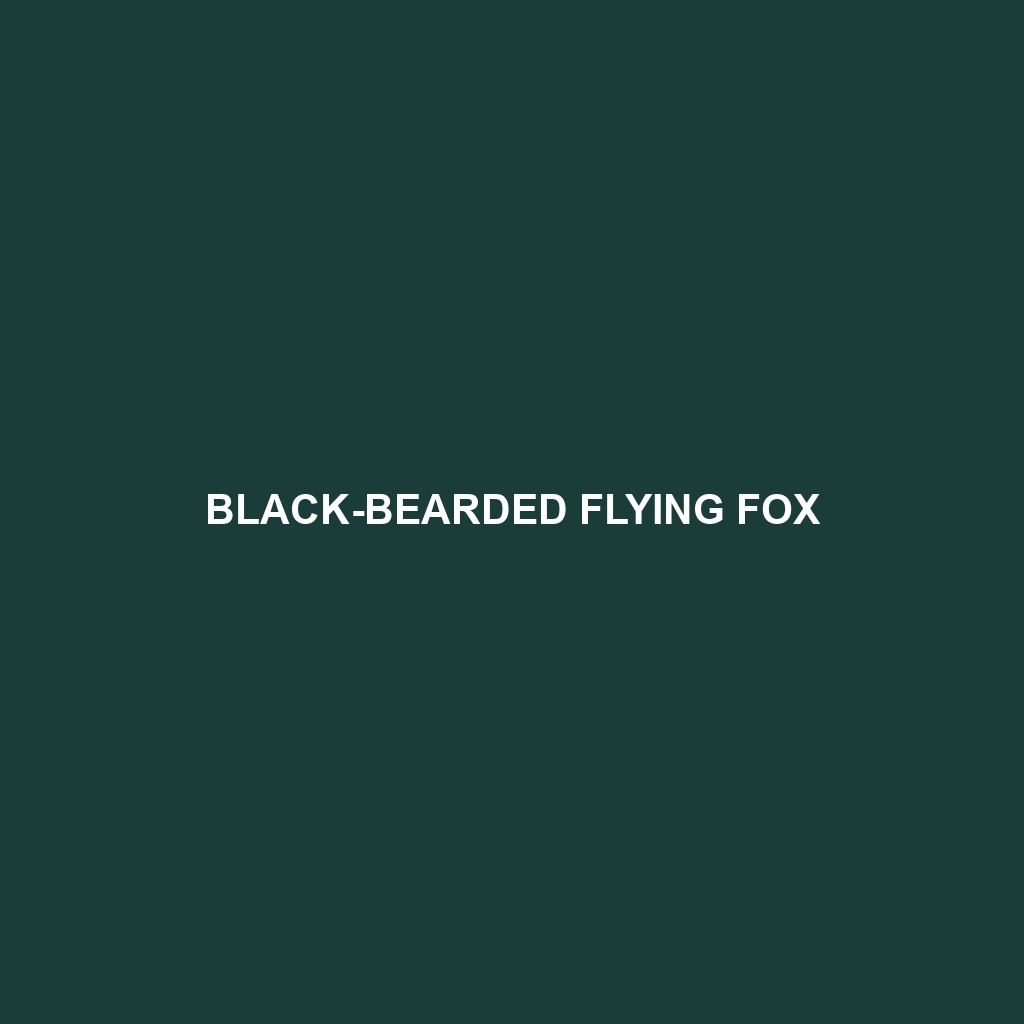Black-bearded Flying Fox
Common Name: Black-bearded Flying Fox
Scientific Name: Petaurus alecto
Habitat
The Black-bearded Flying Fox is primarily found in the tropical and subtropical forests of Australia and New Guinea. They prefer roosting in tall trees within rainforest valleys and coastal mangroves, which provide shelter and access to their food sources. Their habitat typically ranges from moist forests to wooded grasslands, making them highly dependent on the health of these ecosystems.
Physical Characteristics
The Black-bearded Flying Fox can weigh up to 1 kilogram (2.2 pounds) and has a wingspan of approximately 1 meter (3.3 feet). They possess a distinctive black beard of fur around their face, which gives them their common name. Their fur color ranges from dark brown to black, with lighter underparts, and they feature large eyes that are well-adapted for night vision. The shape of their body is elongated, with broad wings that allow for agile flight.
Behavior
These nocturnal creatures are known for their social structure, often living in colonies that can number in the hundreds. They engage in communal roosting, hanging upside down in large groups during daytime hours. Black-bearded Flying Foxes are also known for their strong vocalizations, which are used for communication during the night. Their behaviors include migrating in search of food and new roosting sites, typically during seasonal changes.
Diet
The diet of the Black-bearded Flying Fox primarily consists of fruits, nectar, and flowers. They are important pollinators and help in the dispersal of seeds, making them crucial for the survival of various plant species. Common food sources include eucalyptus flowers and figs, which are abundant in their habitat.
Reproduction
Breeding season for the Black-bearded Flying Fox generally occurs in the spring, usually around October to December. Females give birth to a single pup after a gestation period of about 4 months. These pups are born blind and rely on their mothers for warmth and nourishment until they are mature enough to fly. Parental care is significant, with mothers often seen grooming and feeding their young.
Conservation Status
Currently, the Black-bearded Flying Fox is classified as vulnerable according to the IUCN Red List. The primary threats to their survival include habitat destruction, climate change, and hunting pressures. Conservation efforts are underway to preserve their natural habitats and promote awareness of their ecological importance.
Interesting Facts
Did you know that Black-bearded Flying Foxes can consume up to 200 grams of fruit each night? Their role as pollinators and seed dispersers is crucial for maintaining healthy ecosystems, making them a vital component of forest biodiversity.
Role in Ecosystem
The Black-bearded Flying Fox plays a critical role in its ecosystem as both a pollinator and a seed disperser. By feeding on fruits and nectar, these bats facilitate the reproduction of various plant species, thereby supporting the health of their forest habitats. Their interactions with other species, including plants and insects, highlight their importance in maintaining ecological balance.
